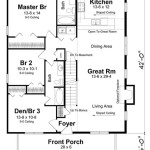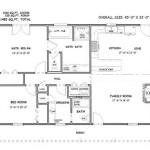Drawing Your Own Building Plans: A Comprehensive Guide
Embarking on a construction project, whether it's a new home, an addition, or a renovation, necessitates comprehensive building plans. While engaging an architect or professional draftsperson is the traditional route, some individuals opt to draw their own building plans. This approach can offer greater control over the design process and potentially reduce costs. However, creating compliant and accurate building plans requires a thorough understanding of architectural principles, local building codes, and drafting techniques. This article provides a detailed guide to the process of drawing your own building plans, outlining key considerations and essential steps.
Understanding the Scope and Limitations
Before commencing the process, a realistic assessment of skillset and project complexity is crucial. Small, straightforward projects like sheds or basic additions might be manageable for individuals with some drafting experience and a solid understanding of construction principles. However, larger or more intricate projects, particularly those involving structural modifications or complex systems, might necessitate the expertise of a professional. Even for relatively simple projects, consulting with a structural engineer or building inspector at key stages can ensure safety and compliance.
Furthermore, consider the time commitment involved. Drawing building plans is a meticulous and time-consuming process. It requires dedicating significant hours to research, drafting, revisions, and navigating local building regulations. An honest evaluation of available time and resources will help determine if drawing plans independently is a feasible option.
Finally, awareness of local building codes and regulations is paramount. These codes dictate specific requirements for structural integrity, fire safety, accessibility, and energy efficiency. Failure to comply with these codes can result in project delays, costly rework, or even legal ramifications. Thorough research into local building ordinances is an indispensable prerequisite to drawing any building plan.
Gathering Information and Resources
The foundation of any successful building plan lies in gathering accurate and comprehensive information. This encompasses site surveys, property details, building codes, and design specifications. A detailed site survey is essential for understanding the existing conditions of the property, including topography, utilities, easements, and setbacks. Utilizing professional surveying services can ensure accuracy and avoid potential disputes with neighboring properties.
Acquiring property records from local government agencies provides crucial information about property lines, zoning regulations, and any existing restrictions on construction. Understanding these limitations is vital for ensuring that the proposed building design is permissible and compliant with local ordinances.
Furthermore, investing in architectural design resources and drafting tools is crucial. This may include textbooks on architectural principles, drafting software programs (CAD), measuring tools, and a high-quality printer for producing accurate drawings. Familiarizing oneself with basic architectural conventions and symbols is essential for creating clear and unambiguous building plans.
Key Elements of Building Plans
Comprehensive building plans typically consist of several essential drawings and documents, each serving a specific purpose. These include site plans, floor plans, elevations, sections, and structural details. A site plan illustrates the overall layout of the property, showing the location of the proposed building in relation to property lines, existing structures, utilities, and landscaping. It also indicates setbacks, easements, and other relevant site features.
Floor plans provide a detailed representation of each level of the building, showing the layout of rooms, walls, doors, windows, fixtures, and appliances. Dimensions are accurately labeled, and specific building materials are noted. Floor plans are crucial for defining the functionality and spatial organization of the building.
Elevations depict the exterior views of the building from different sides, showcasing the building's appearance, including rooflines, windows, doors, and exterior finishes. Elevations provide a visual representation of the building's aesthetic and its relationship to the surrounding environment.
Sections are vertical cut-throughs of the building, revealing the internal construction details, including wall assemblies, floor structures, roof framing, and insulation. Sections provide critical information for understanding the building's structural integrity and thermal performance.
Structural details provide enlarged drawings of specific structural elements, such as foundations, beams, columns, and connections. These details specify the materials, dimensions, and construction methods required for ensuring the structural stability of the building. Furthermore, plumbing, electrical, and mechanical plans are necessary to illustrate the location and configuration of these essential systems. These plans show the layout of pipes, wires, ducts, fixtures, and equipment, ensuring that these systems are properly integrated into the building design.
Drafting Techniques and Best Practices
Creating clear, accurate, and professional-looking building plans requires adhering to established drafting techniques and best practices. Using a consistent scale throughout the drawings is essential for maintaining proper proportions and ensuring accurate measurements. Common scales include 1/4 inch = 1 foot or 1/8 inch = 1 foot, depending on the size and complexity of the project.
Line weights should be used effectively to differentiate between various elements in the drawings. Thicker lines are typically used for walls and structural elements, while thinner lines are used for dimensions, notes, and fixtures. Consistent use of line weights enhances clarity and readability.
Dimensions must be accurately and clearly labeled, indicating the size and location of all building elements. Dimensions should be placed outside the object being measured and should be easily readable. Use of standard architectural symbols and notations is crucial for conveying information clearly and unambiguously. These symbols represent various building materials, fixtures, and appliances, ensuring that the plans are easily understood by builders and building inspectors.
Furthermore, utilizing Computer-Aided Design (CAD) software can significantly enhance the accuracy and efficiency of the drafting process. CAD software allows for precise drawing, easy editing, and the creation of 3D models. Various CAD programs are available, ranging from basic 2D drafting tools to advanced 3D modeling and Building Information Modeling (BIM) software. Familiarizing oneself with CAD software and its capabilities is a valuable asset for anyone drawing their own building plans.
Navigating the Permitting Process
Once the building plans are complete, the next step is to submit them to the local building department for review and approval. The permitting process can vary depending on the jurisdiction and the scope of the project. Typically, the building department will review the plans to ensure that they comply with local building codes, zoning regulations, and other applicable ordinances.
Preparing a comprehensive permit application package is crucial for expediting the review process. This package typically includes the building plans, site survey, property records, structural calculations, and any other required documentation. Ensuring that all required information is included and accurately presented can help avoid delays and requests for additional information.
Being prepared to address questions and concerns from building officials is also essential. Building inspectors may have specific questions about the design, materials, or construction methods proposed in the plans. Responding promptly and thoroughly to these inquiries can help ensure that the permit is approved in a timely manner. It is also important to understand the appeals process in case the permit is denied. Knowing the steps involved in appealing a permit denial can provide recourse in situations where disagreements arise.
Throughout the entire process, maintaining clear and open communication with building officials is critical. Building a positive relationship with the local building department can facilitate a smoother and more efficient permitting process. In some cases, seeking guidance from a professional consultant who is familiar with the local permitting process can be beneficial, particularly for complex projects.

Designing My Own House

Can I Draw My Own Plans Fluid Building Approvals

How To Draw A Floor Plan The Simple 7 Step Guide For 2024

A Super Simple Method For How To Draw Floor Plan Hampton Redesign

Make Your Own Blueprint How To Draw Floor Plans

How To Draw A Floor Plan The Simple 7 Step Guide For 2024

House Plans And Design

Create Professional 2d Floor Plans Roomsketcher

Create Professional 2d Floor Plans Roomsketcher

How To Draw A Floor Plan The Simple 7 Step Guide For 2024








